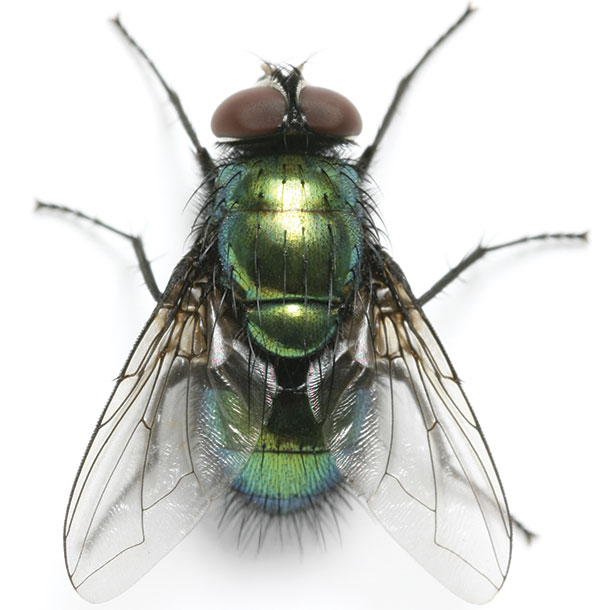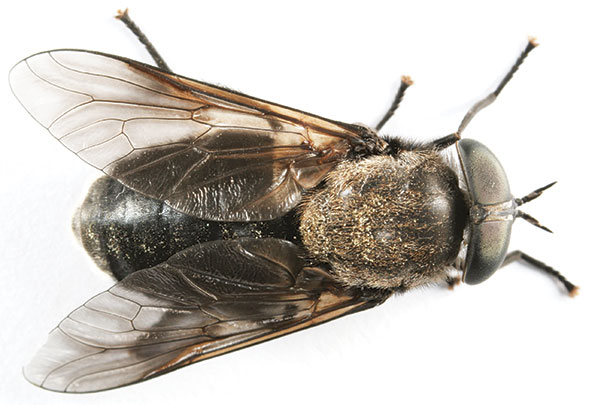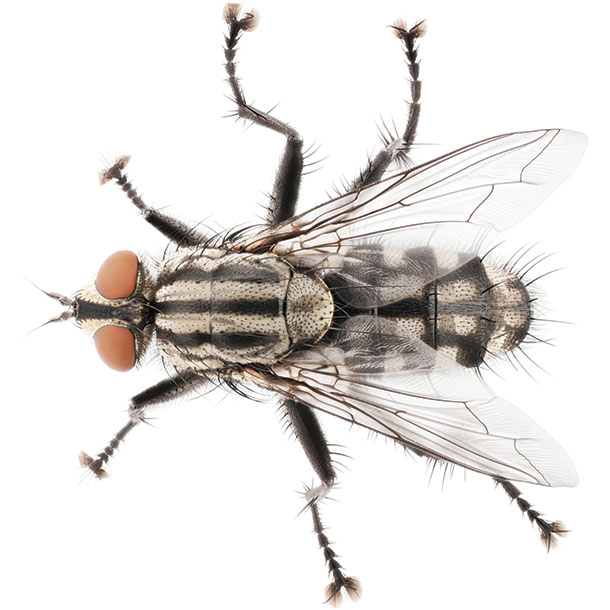What’s the surprising blessing of 20 days and counting of Irish weather? Flies don’t “fly”; ticks don’t “climb”; and the “hum” of miniature chainsaws from swarms of biting mosquitoes has rarely been heard. Everyone, from north to south, east to west, is waiting for the rain to stop and fields to drain. But when the rainbows go away, it is going to be one of the worst bloodsucker seasons in memory.
In the April issue, I shared strategies to manage the spring flush of black flies and horn flies. But on the doorstep of a muggy summer comes the rest of their kin: stable flies, horse flies, face flies, house flies, blow flies, screwworm flies, cattle grub flies, mosquitoes, lice, mites and ticks. Keeping these disease-vectoring pests from healthy livestock is a daunting task. If you have any wounded, newborns and their mamas, or subpar individuals out on the range this summer – be extra vigilant.
Before you gear up and come out swinging, let’s take a closer look at the other flies bugging your cattle.
Blow flies
 If you notice iridescent, metallic- colored carrion flies buzzing around animals, one of them may have a purulent oozing wound or retained placenta. Or there’s a dead animal nearby.
If you notice iridescent, metallic- colored carrion flies buzzing around animals, one of them may have a purulent oozing wound or retained placenta. Or there’s a dead animal nearby.
The name can apply to the calliphora, chrysomya, cynomya, eucalliphora, lucilia, paralucilia, phormia and protophormia genera. If you have an inquisitive child looking for a science project for school or the fair, a blow fly collection might be the winning display.
Face flies
Musca autumnalis are annoying hover drones responsible for spreading pink eye infections along with house flies and stable flies.
Face flies are responsible for vectoring a host of concerning disease-causing organisms.
A December 2005 study published in the Journal of Tropical Biomedicine found the following infectious organisms in the feces, vomitus, external surfaces and internal organs of musca species: bacillus, coccobacillus, staphylococcus, microccus, streptococcus, acinetobacter, enterobacter, proteus, escherichia, klebsiella and candidiasis yeast cells.
Gnats
Be on high alert for swarms of these annoying tiny flies some call buffalo gnat or soldier gnat. They are actually a type of black fly, and in a swarm situation, the animal could bleed to death from their anticoagulant-laced saliva.
Grub flies
Grub flies are what some folks call heel flies and others call warble flies, bomb flies or gad flies. With a genus name like hypoderma, one can imagine these flies make needle-like bites between the toes of their victims, which is rather ironic because the adult fly has no functional mouth parts.
It’s their larva that cause all the trouble. Cattle become quite anxious when flies try to lay eggs. H. lineatum and H. bovis can lay hundreds of eggs on each animal. They remain inside the animal for a full year before migrating to the backbone, causing considerable damage to the hide as they exit. But before that eruption, the only signs your cattle are infected are unexplained weight loss and a drop in milk production. These grubs are the reason insecticides should not be used during the winter months because the larvae are in the animal’s spinal column then.
Horseflies
 Having had the teenage misfortune of whistling down a live horsefly when calling my Belgium-quarter horse gelding in from the back cow pasture, I can tell you the tabanus species is a very large day feeding fly.
Having had the teenage misfortune of whistling down a live horsefly when calling my Belgium-quarter horse gelding in from the back cow pasture, I can tell you the tabanus species is a very large day feeding fly.
Horseflies and the smaller, triangular shaped deer fly (Chrysops sp.) have developed a distinct ability to hone in on warm-blooded animals, synchronizing their emergence to produce an unrelenting attack all season long.
The non-blood-feeding housefly
 The housefly and the lesser musca subspecies Fannia canicularis exploded in parts of Pennsylvania in the fall of 2018. While they don’t bite, they do lay eggs in freshly spread manure. In a rainy summer, they emerge on the scene like a bad case of rotovirus and are a significant vector of foodborne pathogens and pink eye.
The housefly and the lesser musca subspecies Fannia canicularis exploded in parts of Pennsylvania in the fall of 2018. While they don’t bite, they do lay eggs in freshly spread manure. In a rainy summer, they emerge on the scene like a bad case of rotovirus and are a significant vector of foodborne pathogens and pink eye.
Screwworm flies
Female screwworm flies (Cochliomyia hominivorax) literally lay eggs that hatch and begin feeding on cattle 24 hours later. Just castrated, dehorned, branded, sheared and newborn umbilical cords are prime targets, and their larvae will literally eat the animal to death. A highly successful USDA program (1957- 1984) that released male sterile flies into known breeding populations eradicated cochliomyia broods in the U.S.
Screwfly breeding populations still survive in South America, the Caribbean, Southeast Asia, India and Africa. But eradication only lasts as long as the pest is not reintroduced, and in September 2016 a dead deer carcass was found infested with screwfly in Florida. Forty-seven animals ultimately died as a result. Historically, the range for screwflies in the U.S. is limited to southern Florida, Texas, California and Arizona.
But in wet years and mild winters, that range can expand. Dr. James E. Novy, with USDA Veterinary Services in Hyattsville, Maryland, in his 1986 report, “Screwworm control and eradication in the southern U.S.,” wrote that “livestock owners estimated that 1 million cases were treated in Texas in a normal year prior to 1962,” but “thousands of cases were treated each year in Louisiana, Arkansas, Oklahoma, Kansas and Missouri as a result of the migration.”
If you think you have a case of screwworm infection, call your state entomologist immediately.
Stable flies
Stomoxys calcitrans are nothing new around here. They’ve been mentioned in livestock publications since 1758. Stable flies transmit pathogens that cause anthrax, equine infectious anemia (EIA), anaplasmosis and pink eye. They congregate and feed on the legs of their victims. Both the male and the female of the 18 stomoxys species are true vampires and are increasingly a pest of pets and people.
Long-distance storm dispersals transport the flies to areas of high human density like the beaches of coastal New Jersey, Lake Superior and Michigan shorelines, and interior lakes throughout the Mid-Atlantic and Southeast. That means stable flies are potentially a problem anytime a hurricane, tornado or tropical storm moves across rural to urban environments.
Who hasn’t had that happen this year? ![]()
PHOTO 1: Blow Fly
PHOTO 2: Horsefly
PHOTO 3: Housefly Getty images.
References omitted but are available upon request. Clicke here to email an editor.

-
Melissa Bravo
- Certified Crop Adviser – Livestock and Forage Specialist
- Meadow Lake Farm Consulting
- Email Melissa Bravo








